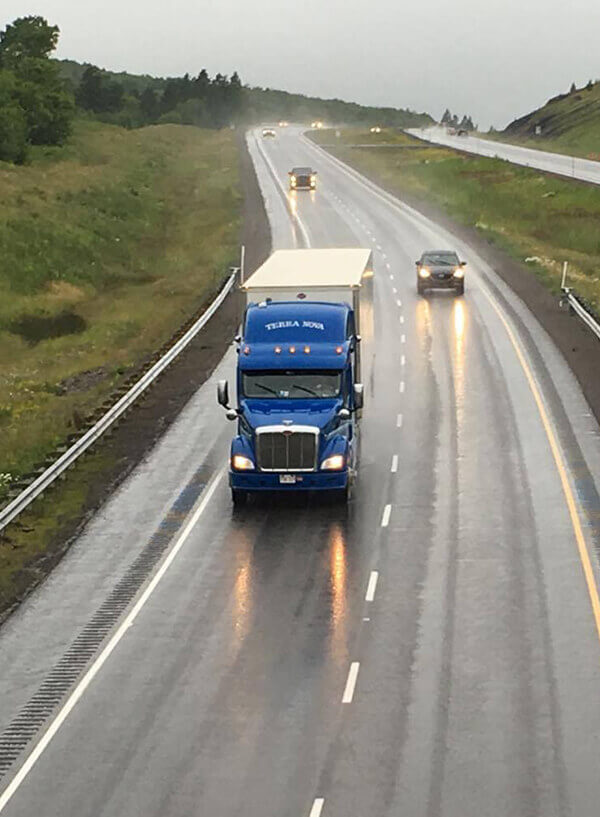New Brunswick can get in the driver’s seat to encourage electric car sales.
The movement towards electric and hybrid vehicles is catching on across Canada, and New Brunswick can be a part of this automotive revolution. From financial purchasing incentives for consumers to helping businesses install charging stations in our down town centers to encourage more tourists from Ontario, Quebec, and the United States to plug in their cars and spend their money in our restaurants and local businesses; New Brunswick can get in the driver’s seat today.
Fredericton has a couple of electric charging stations located at the NB Power Building and the Crowne Plaza has one charging station installed. Imagine New Brunswick’s downtown’s clustered with electric charging stations and the potential for tourism revenue they might bring, not to mention cleaner air for everyone. New Brunswick currently has an electric charging station gap that makes it difficult for tourists with electric cars to visit the Province. It would be to the benefit of local Chambers of Commerce across the Province to work with all levels of government to deploy more charging stations in our downtown districts.
Sales of electric vehicles are on the rise.
Sales of electric and hybrid vehicles are increasing across Canada, with nearly 20,000 units on the roads in the first quarter of 2016. These figures are expected to grow year over year as manufacturers produce more budget friendly electric and hybrid vehicles, such as the Chevy Volt and the Nissan Leaf.
The Conservation Council’s Climate Action Plan calls on the Government of New Brunswick to help accelerate the sale of electric and hybrid family vehicles by offering financial incentives similar to what are offered in Quebec, Ontario, and British Columbia. The Conservation Council’s proposal is calling for 10,000 electric vehicles on our roads by 2020, and then increasing that number to between 140,000 to 150,000 by 2030.
It’s not just the family vehicles that can make the shift. There are now options for electric powertrains that can be installed in garbage trucks, delivery vehicles, and public transit buses.
Yes, We Can!
While it is the role of Government to establish financial incentives, there are Canadian examples to follow. For instance, the Province of Quebec offers an $8,000 rebate for purchasers, as well as a fifty per cent rebate of the eligible costs of installing an electric vehicle charging stations on their property. Ontario offers a $14,000 incentive and the same rebate on installing vehicle charging stations.
The Conservation Council’s goal of seeing 10,000 electric vehicles on our roads by 2020 is an achievable and realistic goal that will have a profoundly positive impact on the air we breath. The average driver in New Brunswick clocks about 20,000 km a year on their odometers, producing five tonnes of greenhouse emissions. By 2030 New Brunswick could remove nearly 500,000 tonnes of greenhouse gas emissions if we can get 100,000 electric and hybrid vehicles rolling off the car lots.
Emissions from transportation – that includes family vehicles, public transit, garbage trucks, and transport trucks – contributes 25 per cent of New Brunswick’s 17 million tonnes of annual greenhouse gas emissions. The solutions are out there, they are becoming cheaper, and more accessible then ever before.

Electric Power-trains?

They are real, and they are fabulous. Cities around the world are starting to deploy them in their fleets. Chicago, Los Angeles, and Paris have begun rolling out electric garbage trucks. These new municipal vehicles make zero noise and emit zero pollution. Electric power-trains aren’t just for big cities, there are real financial and environmental benefits for New Brunswick municipalities to start thinking about electric power-trains as part of their fleet management and replacement strategies.
Because garbage trucks, delivery vehicles, and buses spend a good portion of their operational time idling they are burning through expensive fuel and polluting the air we breath. A single electric garbage truck can offset 55 barrels of oil and reduce 23 tonnes of carbon dioxide a year. The trucks have enough power to carry nine tonnes of garbage, compact 1000 pounds per cubic yard, and cover just under 100 kms on a single eight-hour charge. Wrightspeed Power-trains, created by Tesla Motors co-founder Ian Wright, estimates that their engines can achieve improvements such as a 67 per cent reduction in fuel consumption, a 63 per cent reduction in emissions, and reduce annual maintenance costs by $25,000.
Closer to home, Canada Post has just released an ambitious plan to overhaul the entire postal system, and that includes a commitment to overhaul their national fleet of postal delivery trucks with electric and hybrid engines. In their report, Delivering Community Power: How Canada Post can be the hub of our Next Economy, Canada Post notes that they have the largest public vehicle fleet in the country. With the help of Federal infrastructure funding they want to not only transition their entire fleet to electric and hybrid vehicles, but also add electric charging stations at every post office and depot to be used by their own trucks, but they will also make them available to the public. The dawn of the electric car and power-train is upon us.
In addition to providing incentives for family vehicles, the Conservation Council has also recommended that the Government of New Brunswick consider incentives to encourage commercial trucking companies and municipalities to adopt electric powertrains. We think that goal, if implemented properly, should be to generate an additional one million tonnes of reductions by 2030.
We can do this.
The transition towards electric and hybrid vehicles will benefit everyone across all sectors of the economy. New Brunswick can join Quebec, Ontario, and British Columbia to accelerate the sale of energy-efficient vehicles beyond what will occur naturally as a result of Ottawa’s Corporate Average Fuel Economy standard. These regulations require manufacturers to produce vehicles that are twice as efficient then they are today by 2025. These regulations are in step with other jurisdictions that include the United States, Europe, Japan and China. New Brunswick’s goal should be toencourage consumers to purchase energy-efficient vehicles now to keep their operating costs low once the carbon pricing regime takes effect later this year.
This isn’t a pipe dream. Consumers, businesses, and governments are already leading the revolution. New Brunswick can and must be among those on the leading edge of electric and hybrid vehicle adoption.
